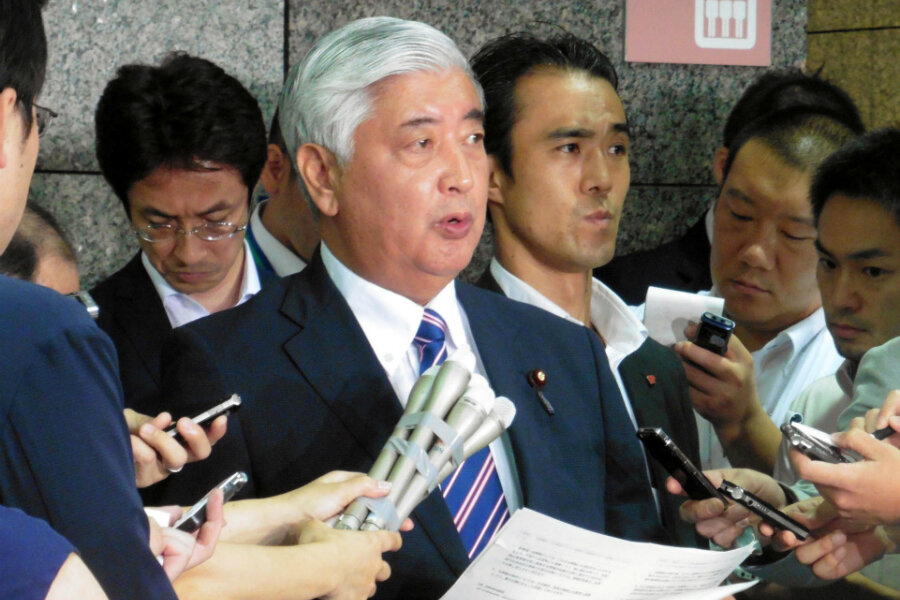Japan protests North Korean missile launch as 'grave threat'
Loading...
A ballistic missile fired by North Korea fell either in or near Japan's territorial waters, said Japanese and South Korean officials on Wednesday, in the latest rebuke to United Nations resolutions.
US Strategic Command said it had tracked two medium-range missiles fired by North Korea on Wednesday. One exploded just after it was launched, while the other continued on toward the Sea of Japan.
Japan's ministry of defense said the second landed inside a 200-nautical-mile exclusive economic zone where Japan claims sovereign rights to exploitation and exploration of resources – the first time a North Korean missile had encroached upon that zone, according to Japanese media.
Japanese Prime Minister Shinzo Abe called the launch a "grave threat to Japan's security" and said his government "strongly protested," according to Reuters.
The launch comes about two weeks after defense officials in Seoul reported that North Korea had fired three ballistic missiles into the sea. North Korean state media later said that the rockets carried trigger devices for nuclear warheads, as part of simulations of a preemptive nuclear attack on its southern neighbor. And in June, it shot a Musudan missile some 870 miles high, in what analysts described as a step forward in its goal of developing enough capacity to hit US-allied bases in the region.
Those weapons tests owe partly to North Korea's displeasure with two recent measures by the US to punish Pyongyang and protect its regional allies, say analysts.
In early July, US and South Korean officials announced that a long-awaited missile-defense system known as the Terminal High Altitude Area Defense (THAAD) was ready to be deployed in South Korea – against the objections of North Korea, which warned of "physical counter-actions."
Weeks later, the US placed Kim Jong-un on a sanctions list, citing UN documentation of human rights abuses, eliciting a furious response from the North Korean foreign ministry, which cut off its last remaining formal channel of communication with the US.
"The United States has crossed the red line in our showdown," said Han Song Ryol, the ministry's director-general of North Korea's US affairs department, in an interview with the Associated Press at the time. "We regard this thrice-cursed crime as a declaration of war."
Those tensions seem likely to remain high for the time being, as the US prepares for a large-scale series of annual joint exercises with South Korea in August – drills that North Korea regards as a simulation of an invasion.
Japan has been particularly wary of North Korea's military aims. In a report issued by its cabinet on Tuesday, it noted that North Korea may now have the capability to produce nuclear warheads – and shoot missiles as far as 6,200 miles away – saying it had "increased tensions on the Korean peninsula and become a grave and imminent threat," according to the Associated Press.
South Korea's joint chiefs of staff, NATO's secretary-general, and the US State Department all issued separate statements condemning North Korea's latest launch.
This report contains material from Reuters and the Associated Press.








